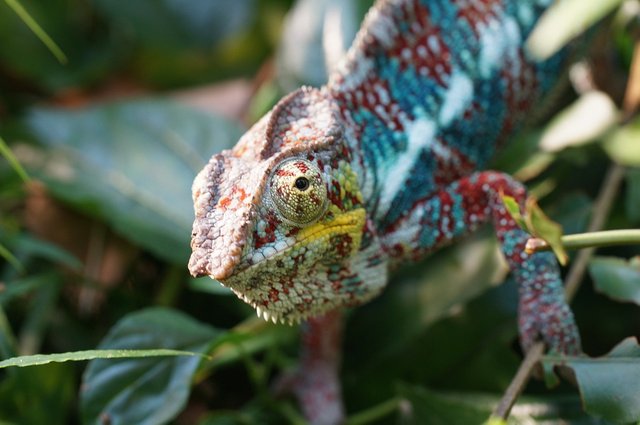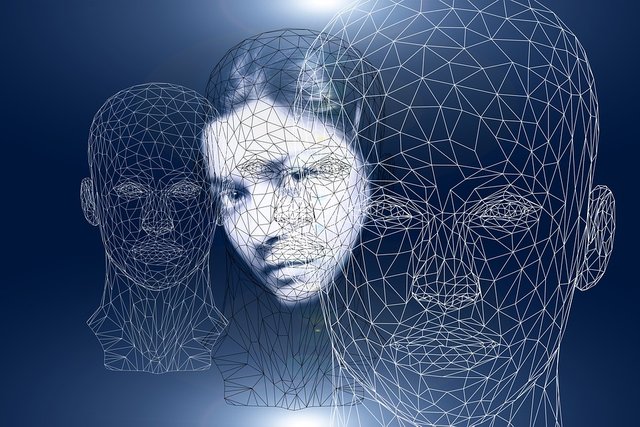Social Chameleons – Taking Communication to Another Level

Introduction
The human being is often referred to as ‘social animal’. From the beginning of our time, our existence and environment are dependent on our interactions with others. In this jungle that we call life the more healthy and beneficial connections you make with others, the more chance you have to be successful.
If you regard this topic from an evolutionary point of view, you would see how important communication was even at the dawn of our existence. Our ancestors lived in an environment in which individuals who were “on their own” had significantly lower chances to survive. The harsh conditions and the need of other people around us have helped us develop behavioral mechanisms both on a conscious and subconscious level.
In our interactions with other individuals we receive information on several channels often referred to as verbal, non-verbal and paraverbal. If you would like to learn more about the non-verbal communication, here is a post that I’ve written few weeks ago.
Recognizing cues in other people’s behavior and understanding them better is not only a matter of ‘outside’ resource learning. Self-reflection and more specifically self-monitoring play huge part in our social environment. Let’s discuss the idea of self-monitoring and see why it is so important for us as social animals :)

In the 1970s the psychologist Mark Snyder introduces the concept of self-monitoring as our ability to monitor our own social behavior in order to adapt to a particular situation or people we are interacting with.
The self-monitoring individual is one who, out of a concern for social appropriateness, is particularly sensitive to the expression and self-presentation of others in social situations and uses these cues as guidelines for monitoring his own self-presentation.
According to Snyder there are several applications of self-monitoring:
(a) to communicate accurately one's true emotional state by means of an intensified expressive presen- tation;
(b) to communicate accurately an arbitrary emotional state which need not be congruent with actual emotional experience;
(c) to conceal adaptively an inappropriate emotional state and appear unresponsive and unexpressive;
(d) to conceal adaptively an inappropriate emotional state and appear to be experiencing an appropriate one;
(e) to appear to be experiencing some emotion when one experiences nothing and a nonresponse is inappropriate.
In his theory about self-monitoring in expressive behaviour Mark Snyder recognizes two types of individuals – ones with high self-monitoring skills and others with low ones.
Low self-monitors are people who tend to act straightforward in accordance to their own world views and attitudes, regardless of their social environment. These people are often less observant of social cues and consider usually would not express themselves in a way opposite of their beliefs. Due to the fact that they lack social sensitivity, these people could be insistent and even aggressive in their communication with others. Naturally such behaviour could lead to rejection, social isolation, anxiety and depression.
On the other hand, high self-monitors are people who tend to adjust their behaviour to their social situation and adapt their attitude and self-presentation. These people are often considered by others as more receptive, pleasant to communicate with, and benevolent towards them. High self-monitors are extremely sensitive to social cues. In their communication with others they try to predict and achieve certain behaviour patterns while at the same time be able to imitate and change their own in order to achieve certain goal. Because of their ability to adapt and change their social self-presentation these people are often called “social chameleons.”

Chameleons are famous for their ability to change colors. When hunting, chameleons tend to remain motionless, hidden from their enemy and prey, patiently waiting for their victim to come in their reach.
In social interactions the same ‘hunting principle’ could be applied. High self-monitors are not only controlling their own behaviour, but they are really good at monitoring and trying to control the attitude of the ones around them. This ability makes them really good at manipulating other people while at the same time being resistant to their will and ideas.
Today we know that when people lie they tend to monitor and control their facial than body presentation. It is a common misconception that a liar would avoid eye contact. On the contrary by keeping constant eye contact the liars exercise control over the situation making sure that they are believed to. We are bad at multitasking. When a person lies they have to monitor several channels of information in order not to fail in their deception. Paul Ekman et al. have conducted experiments which suggest that deception is more likely to be detected from an examination of body cues than facial cues.

Social chameleons are masters of their non-verbal behavior
Naturally, our nonverbal expressions are related to our emotional states. But that’s just a tiny glimpse at the valuable information the nonverbal behaviors could tell us about certain person. Often non-verbal communication is related to opinions, moods, values, personality dispositions, psychopathologies, physical and cognitive states of a person. Thus, a master of his own non-verbal behavior could use it —or try to—to claim a variety of self-relevant characteristics.
Why regulating and observing the non-verbal behavior is more important
In interpersonal interactions, the verbal communication with others is easier to execute and monitor. On the other hand the non-verbal behavior remains ‘shrouded’ both for both interactors. Why? Because usually people never know as much about their own nonverbal behaviors as do the people with whom they are interacting. And if the other person is unable to recognize the cues, a lot of the information is lost.
Usually, people would want to control their nonverbal behaviors. Only on a rare occasion would a person allow his or her nonverbal behaviors to be spontaneous and unselfconscious expressions of their dispositions or feelings or other internal states. When a person attempts to control their nonverbal behavior, the purpose is to achieve some self-presentational goals. These are the cases in which people use their nonverbal communication in order to obtain certain identities that they think others will find appropriate and genuine.

Keep in mind that the regulation of nonverbal behaviors for self-presentational purposes is an ability which is learned. Meaning that patterns of skills could be predicted if you have clues of the person’s self-presentational desire. Nonverbal skills and strategies are not universal for every culture, gender, and age. In the same manner personality differences that are of special self-presentational significance, such as differences in self-monitoring, could also be helpful in the prediction of nonverbal abilities and styles.
Controlling both the verbal and non-verbal behavior is crucial in building a desired self-presentation in the communication with others. Social chameleons have various strategies which they use to convey particular impressions to others that do not necessarily involve nonverbal expressive cues. Often the best ones are a mixture of verbal and non-verbal communication.
Usually, the person to whom the self is presented is the other person in the interaction. Thus, the aspects of self that are presented are edited in such a way as to create the desired impression on that particular person. This information is somehow common sense, but social chameleons would take their self-presentation even further. Often expressive behaviors that seem to be directed toward an interaction partner are actually performed for the benefit of others who are not part of the interaction at all but are simply observing it.
The self-presentation is a ‘project’ on which the social chameleon is constantly working and improving. Even when they are alone, their self-presentation could be a mixture of qualities and traits the value and admire in other people. That includes gestures, words, outside appearance like clothes, lifestyle etc.

Interacting with or being a social chameleon is not necessarily a bad thing
Depending on their situation the social chameleons could learn how to play different roles in their lives becoming great partners and friends in life, people who care and understand you. On the other hand they can turn into your worst nightmare, being emotionally detached, constantly manipulating you and turning into a stranger over a night. Learning how to develop your ability to self-monitor and being aware of your own self-presentation and motives would significantly develop your skills to understand others and ‘see through’ their intentions.
Final thoughts
I really hope this article was interesting and beneficial to you. If you have some thoughts about it, please feel free to share them with me. If you would like to learn more about certain topic in psychology, let me know and I might create a post about it.


Sources:
DePaulo, Bella M. (1992), Nonverbal behavior and self-presentation. Psychological BulletinVolume:111
Issue:2 First page:203 Last page:243
Snyder, Mark Self-monitoring of expressive behavior. Journal of Personality and Social Psychology Year:1974 Volume:30 Issue:4 First page:526 Last page:537
In less strict way of speaking, I think that society impose mandatory social camouflage on us, meaning that all of us have to be social chameleons to some extent, to be able to fit into the environment and fulfill social norms and standards of behavior. However, speaking of people who are constantly pretending that they are something they're not just to please/manipulate others, I think that such people suffer more from anxiety/depression than those who are just being themselves, because they live in constant fear of their true personalities being revealed and rejection.
I disagree with the idea that being a social chameleon has either a manipulation or anxiety behind it. I consider myself a social chameleon, which stems from the fact that I have many different interests. In my life, I have been able to explore a wide number of topics from which I pull from to best relate to the person I am speaking with. My behaviors are always genuine, since they come directly from my personal experiences, but they are tailored in order to explore any given topic at its fullest with the person a group. There are many topics that I can approach from different angles. For example, if I am talking to a scientist about my research, I will most likely focus on the science instead of my spiritual studies, even if they both cover the same topic. That being said, I will mention things from my spiritual studies that apply, because you never know if it could open to a wider conversation.
Most of the people have different interests and are able to engage in conversations covering differing topics. The term "social chameleon" refers to ability to adopt variety of behaviours depending on social environment, regardless of your true personality/character.
Do you have a reference for that definition? Because from what I have read, which has not been a ton, but a fair amount, I don't find a negative connotation to the term. From the way you are phrasing it, it seems that all "social chameleons" hide their true selves, while the studies I read say that in some cases they are phony, but in others they are people that know has to navigate the environment by tuning in to the people in it. You could think they are phony because you only see one facet and can't understand the whole, not because they are necessarily hiding it or aren't aware of their true selves.
You are missing the self-monitoring part in this picture. Although I understand your point. Studies have been done to examine the role of anxiety, social rejection and conformation in self-monitoring and there is no significant correlation between them and self-monitoring.
I think I know a social chameleon or two...
As I was reading, I was wondering about 2 things: I think I am highly sensitive to people's cues and whatnot, but for me, social anxiety is behind it, not the desire to manipulate. But I guess with anxiety, I probably imagine a lot of things people might think or feel without having any real proof. I just worry about everything I do. The second thing is people on the autism spectrum certainly must rate lower on the scale, through no fault of their own...since Snyder wrote his piece in 1974, there was probably a lot less said about autism at that time - but yes, rejection, etc seem to fit.
Thanks for the article.
Cheers
There are several researches done, which decline this hypothesis.
Interesting perspective. I haven't thought about it. Thanks a lot !
You've talked about a number of ways in which people manipulate each other through nonverbal behavior. Most of this is just self-evident to any person who has ever had prolonged contact with people. And yet it seems these kinds of self-evident observations are difficult to state in the PC culture we live in right now. How, for example, would a feminist interpret the following?
Our social lives are so much based on nonverbal communication, that they would be almost impossible without it. And yes sometimes people communicate things they are not aware of. But dare a man say that a woman was sending signals, even if she didn't mean them that way, and that what was later interpreted as "harassment" was a direct result of that? This kind of defense is not even allowed in our current culture I think, and the fault is always laid squarely on the man's side. (Note that I've never been inappropriate with a woman! Or a man! I just suspect that these kinds of things can happen, yet their possibility is unacknowledged by many.)
I understand your point but that's why it is an interpretation :)
I consider myself a person with extremely high self-monitoring ability :)
I come from a town which is known for high amount of social chameleons so in a way I observed people doing it since I was a kid. In addition I am a social butterfly and I have continued to grow in aspect of self-monitoring by meeting and observing a lot of people from different cultures and backgrounds.
Finally, I have spent more than a ten years in professional debate which has helped my skills to grow by tremendous amount.
These skills have served me great for the most of my life, but there was a period where I hated them. At one point of life i grew emotionally detached because I was controlling both my emotions and actions to much and in a way I became a slave to my self-controlling abilities, I forgot what my original self was like.
That period was a few years ago and meanwhile I learned what the perfect balance between self-monitoring and letting myself off the hook was. Now I am once again happy for the abilities I possess.
Thanks for the insightful post on this topic I always love to read about such topics :)
What a great comment! I'm glad you enjoyed this post. You are always welcome on my blog :)
Being A SteemStem Member
Wow such a nice hint on behavioural strategies. But I think on the issue of liars not having an eye contact, I would admit that some people are so tricky and professional enough to make their gesures to be aligned with their verbal communication as to make their views appear realistic. How can such witty act be analysed?
Keep in mind that non-verbal communication depends on several factors like the person's culture, social environment etc.
Of course certain gestures happening at certain times ( or while saying certain words) could warn you to be careful when talking with this person. An analysis is usually done after establishing the person's non-verbal behaviour baseline. In different situations we have different baselines.
Interesting, thank you. I notice that both the references are quite old and pre-date the Internet. I wonder if they offer insights into how people behave online, or whether things have changed as more social nteraction takes place on line? I was also wondering about the relationship between self monitoring and emotional intelligence, if there is one.
Self-monitoring could be regarded as emotional intelligence in a way I guess. To be honest, I haven't researched it from this perspective. Surely there's a lot to add to this subject.
I tend to write my articles not as much as educative material rather than thought-provoking content. So far by great comments like yours it seems to be working !
Thanks for stopping by !
I tend to get super excited when I read excellent posts like these. 👏👏 I love how well written & how this post can be very informative when it comes to understanding the individual psyche. And in connection with what you have quoted above, I consider myself as a high-self monitor because I easily pick up social cues & I always see to it that I am very sensitive to other people's responses and feelings towards me & to a situation we engage into. Maybe,that's the reason why I have lots of friends & of course they are true ones as well.
Thank you for your support! You are always welcome to my blog :))
Yes, I will always stop by. 😀
Very good written! Thank you.
This article is interesting. I wonder if every people ever lived, have shown a certain degree of social chameleon attributes? I mean, we're always trying to mask something from another individual.
One always does.
Thanks for your comment !